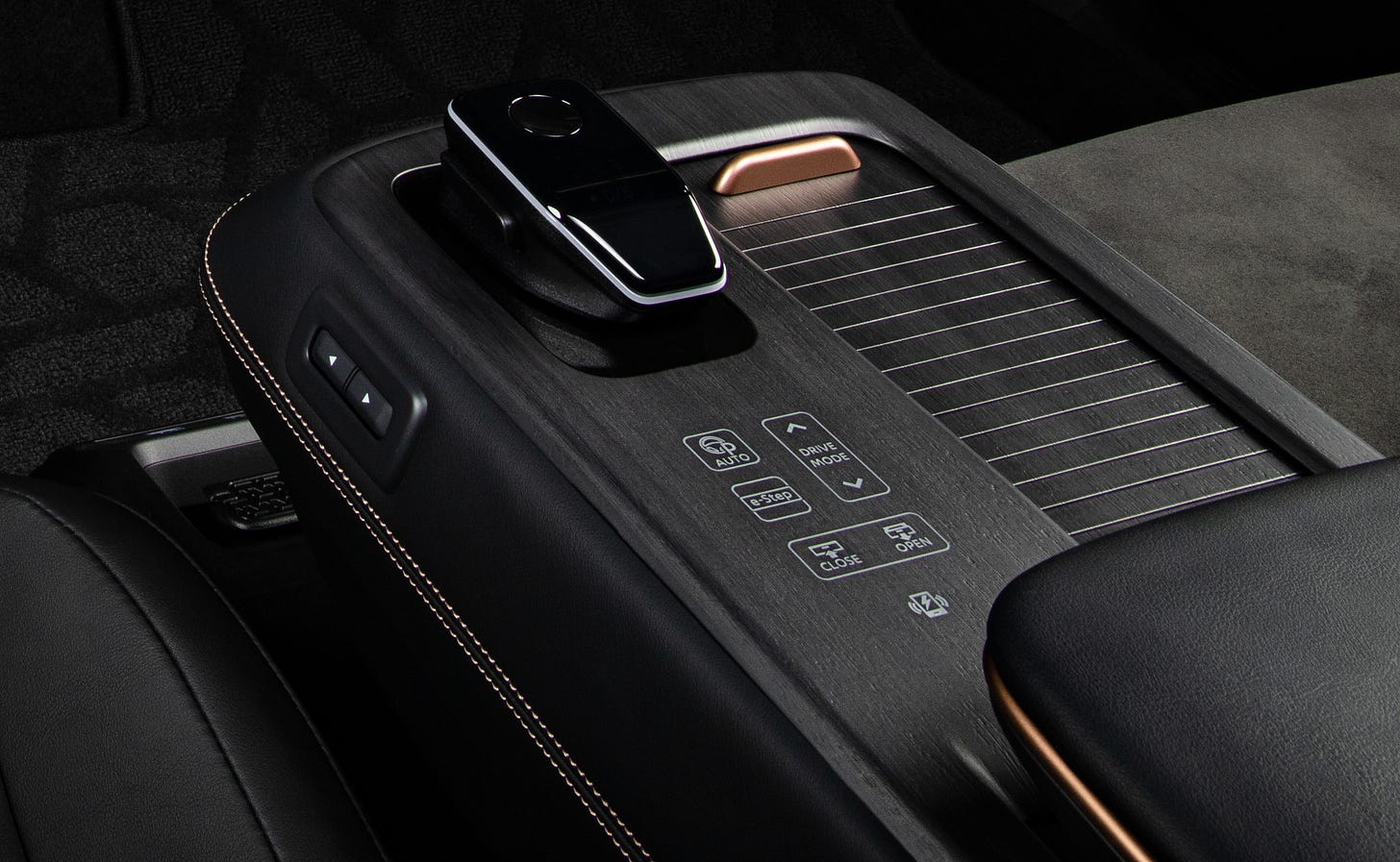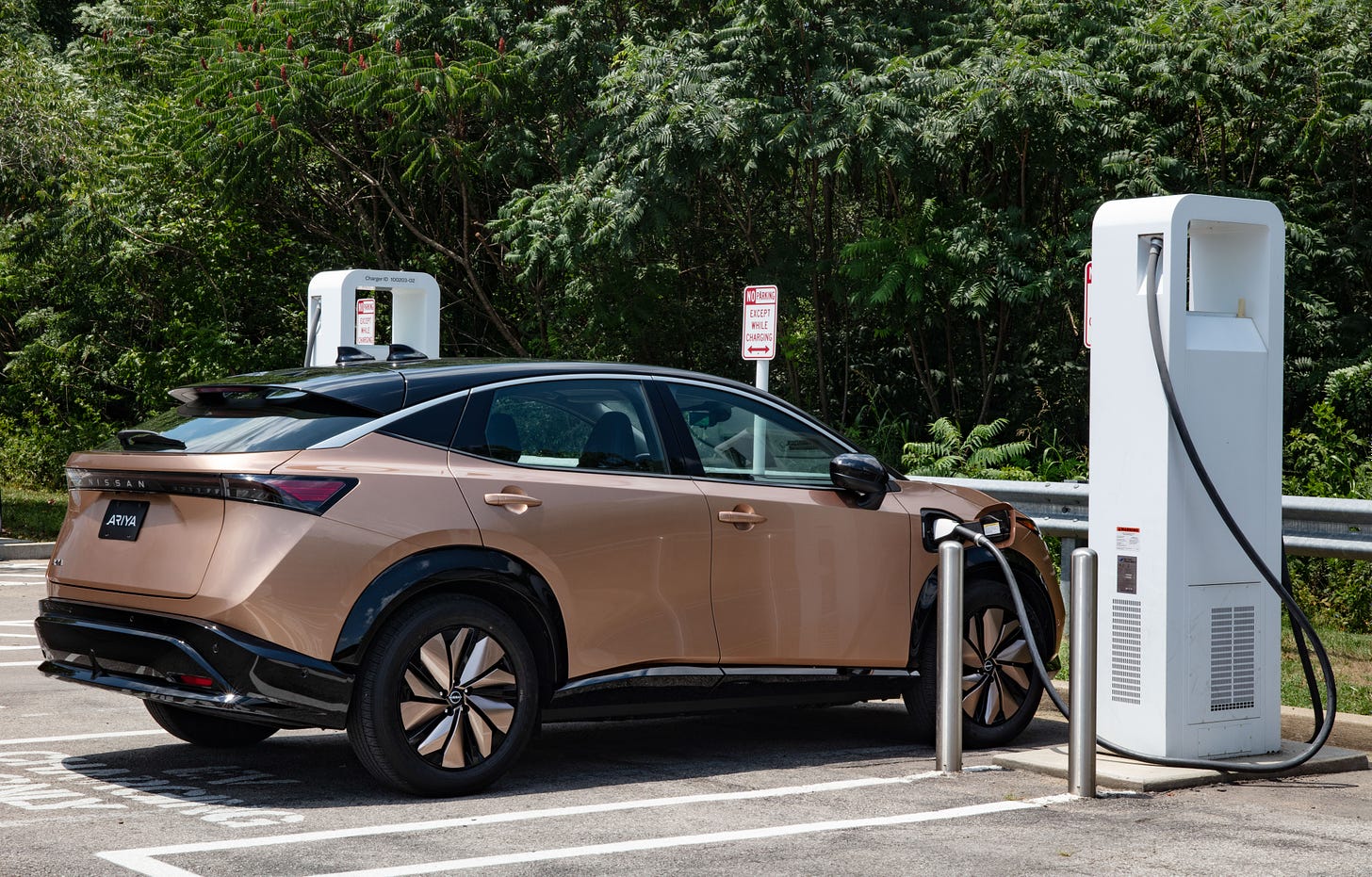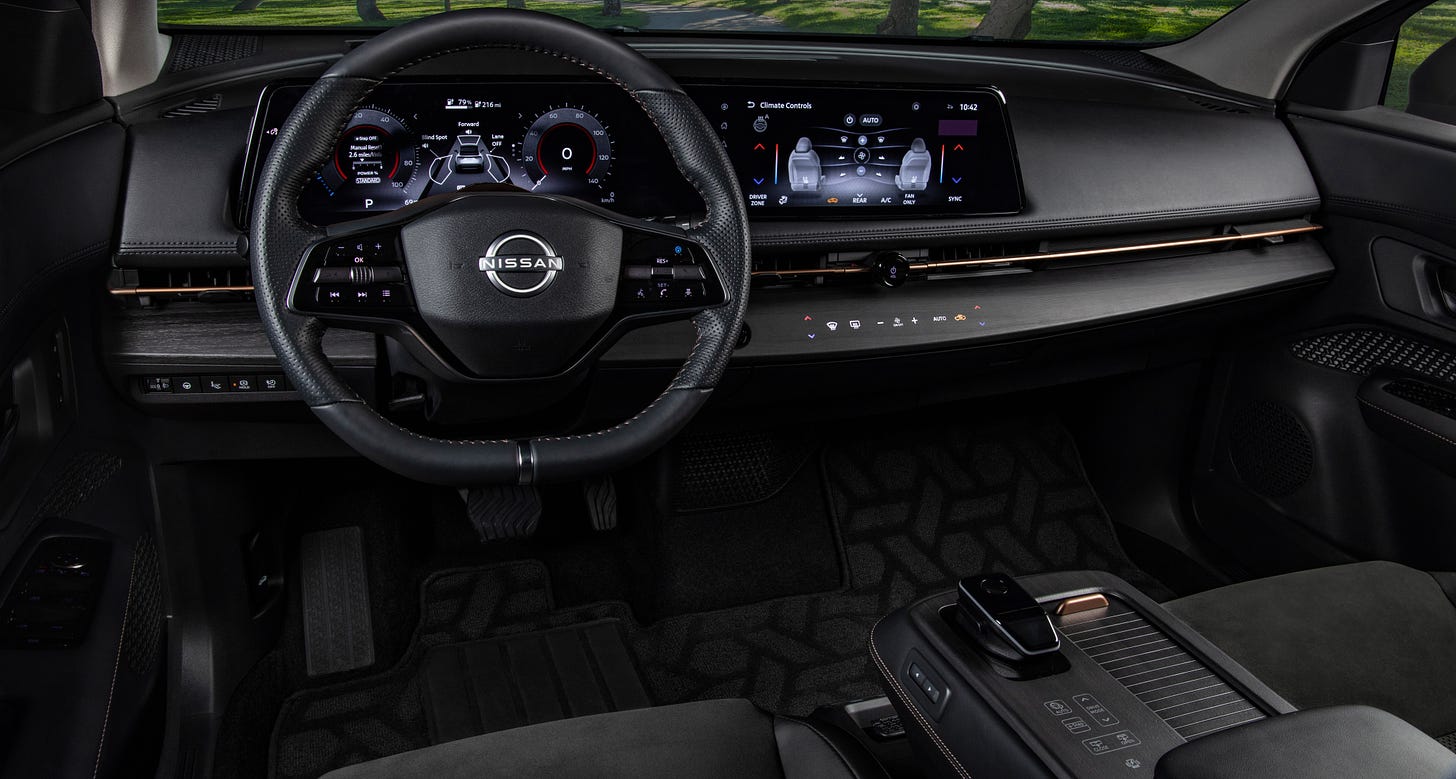NASHVILLE, Tenn. — The Nissan Ariya is a wonderful electric car filled with a whole lot of “but why?” moments.
The wood on the dash and the floating center console is absolutely gorgeous, and I love how the buttons have been laser-etched onto the surface. But why did they make it so there’s no meaningful tactile feedback when interacting with them? Instead, we get a wooden panel that works something like a touchscreen. Weird.
Electric cars often have a feature called one-pedal drive. This means the car will slow itself down aggressively when you take your foot completely off the accelerator. The electric motor runs (basically) in reverse, slowing the vehicle while recharging the battery. It also means that you can drive the car almost entirely with your right foot, rarely touching the brake pedal until you need to come to a complete stop.

I always set the one-pedal drive to max to get the best efficiency. But why are there two separate settings for one-pedal drive in the Ariya? An e-Step button allows you to choose the ferocity with which your car will brake and thus regenerate the battery when you lift off the throttle.
You can also choose to put the transmission in either D or B, which adjusts the ferocity with which your car will brake and thus regenerate the battery when you lift off the throttle.
I had a long conversation with Nissan’s PR and engineering folks to ensure I understood what was happening. These two controls, the e-Step button and the D/B shift option, do the same thing. But to get the maximum regen from one-pedal drive, you must adjust both controls. It’s bonkers and doesn’t persist through turning the car on and off, so you have to do it repeatedly every time you start the vehicle. It’s bizarre.

An enormous powered drawer is underneath the infotainment screen (and the wood-inlaid climate controls). Press a button, and the drawer magically presents itself to you, ready to be filled with things. But why does it need to be powered? Yes, it’s a neat party trick, but wouldn’t a normal, manually opening drawer have been enough?
And why, directly adjacent to the fancy, powered drawer, is there a bland plastic button that makes the glove compartment unceremoniously dump open in an entirely unfancy way?
Don’t get me wrong; the Ariya is a great car. It’s fun to drive and has a maximum range of up to 304 miles while starting in the mid-$40,000 range. But why are there eight different versions of it, and why are the names completely incomprehensible?

I leave it as an exercise to the reader to figure out which trims are better than the others: Venture+, Engage, Engage e-4orce, Engage+ e-4orce, Evolve+, Evolve+ e-4ORCE, Empower+, and Platinum+.
You might ask why, if there is both an Engage and an Engage+, there is a Platinum+ without a corresponding Platinum. That is a question without an answer. It’s just one of the mysteries of the Ariya.
One excellent thing is the stateside arrival of ProPILOT Assist 2.0, the newest version of Nissan’s advanced driver assist system (ADAS) that allows for hands-off driving on the highway. It’s similar to BlueCruise from Ford and Super Cruise from General Motors, and it worked very well.

The automatic parking feature was equally impressive, allowing you to choose exactly where the car would be parked, either a parallel or perpendicular space. Then, without the driver needing to touch the pedals, steering wheel, or shifter, the Ariya can promptly park itself without fuss or muss.
I know I’ve been poking a lot of fun. Still, I love the Ariya, and I would heartily recommend it to anyone looking to buy a new electric car — except reservations are closed and, as best I can tell, the car is completely sold out so you can’t actually buy it.
From the outside, it’s a fresh update to the modern Nissan design language. It looks great, especially from the front, and a number of people came up to me in a parking lot and asked what it was. It’s a terrific car in so many ways, quirks aside.
I just hope someday it’ll go on sale.


